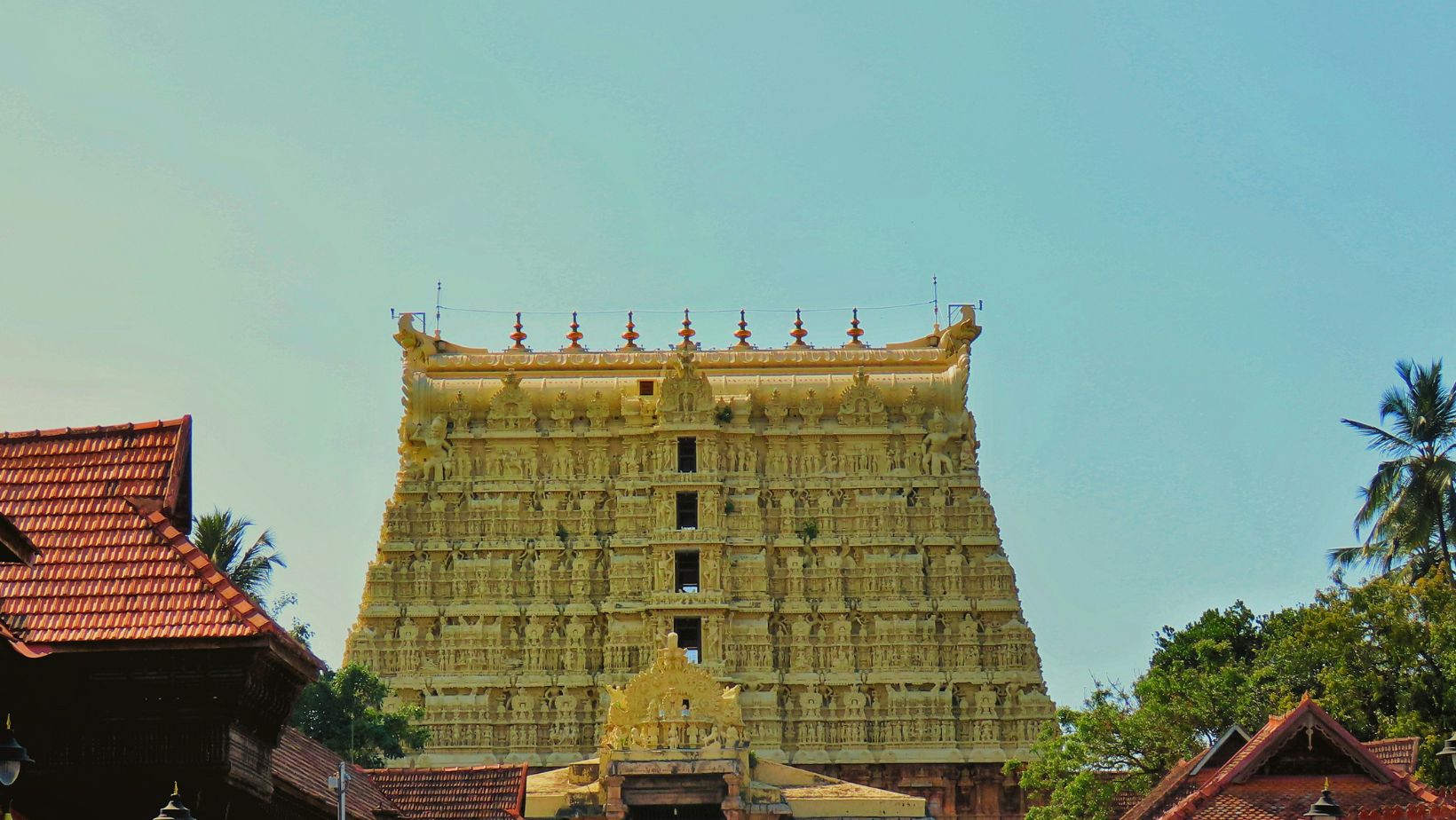Somnath Temple, located on the western coast of Gujarat, India, stands as a timeless testament to faith and architecture. Renowned as the first among the twelve Jyotirlingas, it draws millions of devotees every year. The temple’s enduring legacy is marked by its repeated reconstruction, symbolizing resilience against historical invasions.
Historical Significance
Ancient Origins
According to legend, Somnath Temple was originally built by the Moon God, Soma. Ancient texts like Rigveda and Mahabharata mention its significance. This temple was revered even during prehistoric times.
Repeated Destruction and Restoration
Throughout history, Somnath Temple faced invasions and destruction by foreign rulers like Mahmud of Ghazni. Despite these setbacks, the temple was rebuilt multiple times, showcasing India’s unwavering spiritual determination. Each restoration amplified its sacred status and reinforced Hindu identity.
Architectural Marvel
Design and Structure
The present Somnath Temple, reconstructed in 1951, showcases the Chalukya style of architecture. Intricately carved pillars, towering shikharas, and majestic mandapas define its grandeur. The temple’s exterior walls feature detailed carvings depicting mythological stories.
Unique Features
One remarkable feature of the temple is its strategic location. The “Baan-Stambh” (Arrow Pillar) points directly towards Antarctica, highlighting ancient India’s advanced geographical knowledge. The sanctum sanctorum houses the revered Jyotirlinga, illuminated beautifully by natural light.
Spiritual Significance
Jyotirlinga Importance
Somnath Temple enshrines one of the twelve Jyotirlingas, sacred representations of Lord Shiva. Pilgrims believe that visiting these Jyotirlingas provides liberation from the cycle of birth and death. Somnath, being the first Jyotirlinga, holds unparalleled spiritual prominence.
Religious Rituals and Festivals
Daily rituals include morning and evening aartis, drawing numerous devotees. Festivals like Maha Shivratri, Kartik Purnima, and Shravan Maas witness heightened spiritual fervor. During these celebrations, special pujas and cultural events enrich devotees’ experiences.
Visitor Experience
Best Time to Visit
Ideal months to visit Somnath are from October to March. The pleasant weather during these months enhances sightseeing and pilgrimage activities. Avoiding peak summer ensures a comfortable journey and visit.
Accommodation and Facilities
Several accommodation options near the temple cater to diverse visitor needs. Budget lodgings, mid-range hotels, and luxury resorts offer amenities like Wi-Fi, restaurants, and guided tours. Facilities within the temple complex include drinking water, restrooms, and wheelchair accessibility.
Nearby Attractions
Triveni Sangam
Close to Somnath Temple lies Triveni Sangam, the confluence of rivers Kapila, Hiran, and Saraswati. Pilgrims consider it sacred to bathe here before visiting Somnath. Evening aartis at this confluence provide an unforgettable spiritual experience.
Bhalka Tirth
Located around 5 km from Somnath, Bhalka Tirth is where Lord Krishna was accidentally wounded by a hunter’s arrow. A serene temple now marks this significant spot. Visiting Bhalka Tirth enriches one’s pilgrimage, connecting Krishna’s life to Somnath’s spiritual heritage.
Cultural and Economic Impact
Local Culture and Traditions
Somnath significantly shapes the local culture. Traditional dances, devotional music, and rituals deeply reflect the temple’s spiritual influence. Local artisans produce religious souvenirs, sculptures, and handicrafts, enriching visitors’ experiences.
Economic Benefits
The temple attracts millions annually, boosting the local economy. Tourism creates numerous employment opportunities in hospitality, transport, and trade. Nearby markets flourish, selling religious items, local delicacies, and handmade crafts.
Travel Guide
Reaching Somnath Temple
By Air
The nearest airport is Diu Airport, approximately 80 km away. Visitors often opt for connecting flights via Mumbai or Ahmedabad. From Diu, taxis and buses readily connect to Somnath.
By Train
Somnath has a well-connected railway station. Major cities like Ahmedabad, Rajkot, and Mumbai have frequent trains to Somnath. Travelers prefer rail journeys due to affordability and comfort.
By Road
Gujarat State Road Transport Corporation (GSRTC) provides excellent bus services connecting Somnath to nearby cities. Private taxis and rental cars offer flexibility and comfort for personalized itineraries.
Travel Tips
Travelers should dress conservatively and remove footwear before entering the temple. Photography within temple premises is strictly prohibited. Visitors are encouraged to respect local customs, rituals, and traditions for a harmonious experience.
Environmental Initiatives
Eco-Friendly Practices
Somnath Temple authorities implement eco-friendly measures, ensuring cleanliness and sustainability. Initiatives include waste management programs, solar lighting, and water conservation projects. These practices promote environmental awareness among pilgrims.
Community Participation
Local communities actively participate in preserving the temple environment. Regular cleanliness drives, awareness campaigns, and eco-friendly events encourage sustainable tourism. Community involvement enhances environmental conservation, benefiting future generations.
Myths and Legends
Moon God’s Penance
Legend says the Moon God, Soma, built the temple to appease Lord Shiva, seeking liberation from a curse. Shiva’s blessings restored Soma’s brilliance, symbolizing the waxing and waning of the moon. This myth enhances the temple’s mystical aura.
Legend of Rebuilding
The recurring destruction and restoration of Somnath Temple have spawned several legends. It is said that Shiva himself decreed the temple’s resilience, stating it would rise every time it fell. These legends reinforce the temple’s spiritual and historical importance.
Modern Developments
Recent Renovations
Continuous restoration projects maintain Somnath’s grandeur. Recent renovations include upgraded visitor facilities, enhanced landscaping, and improved infrastructure. These developments ensure a comfortable and meaningful pilgrimage for devotees.
Technology Integration
The temple now utilizes technology to enrich visitor experiences. Digital displays narrate its history and spiritual importance. Online portals facilitate seamless booking for special rituals and accommodation, reflecting modern convenience.
Future Prospects
Expansion Plans
Authorities plan significant expansions, aiming to accommodate increasing visitor numbers. Upcoming projects include enhanced transport connectivity, more lodging facilities, and improved visitor amenities. These expansions promise to further uplift Somnath’s global appeal.
Preservation Efforts
Ongoing preservation efforts ensure the temple’s historical integrity remains intact. Collaborations with archaeological departments and conservation experts safeguard its architectural beauty. Preserving Somnath Temple guarantees its legacy for future generations.
Somnath Temple embodies India’s enduring faith, resilience, and architectural brilliance. Its rich history, spiritual significance, and modern amenities attract devotees and travelers alike. Visiting Somnath offers not just religious fulfillment but also deep cultural and historical insights, making it a truly unforgettable destination.











**mindvault**
mindvault is a premium cognitive support formula created for adults 45+. It’s thoughtfully designed to help maintain clear thinking
**breathe**
breathe is a plant-powered tincture crafted to promote lung performance and enhance your breathing quality.